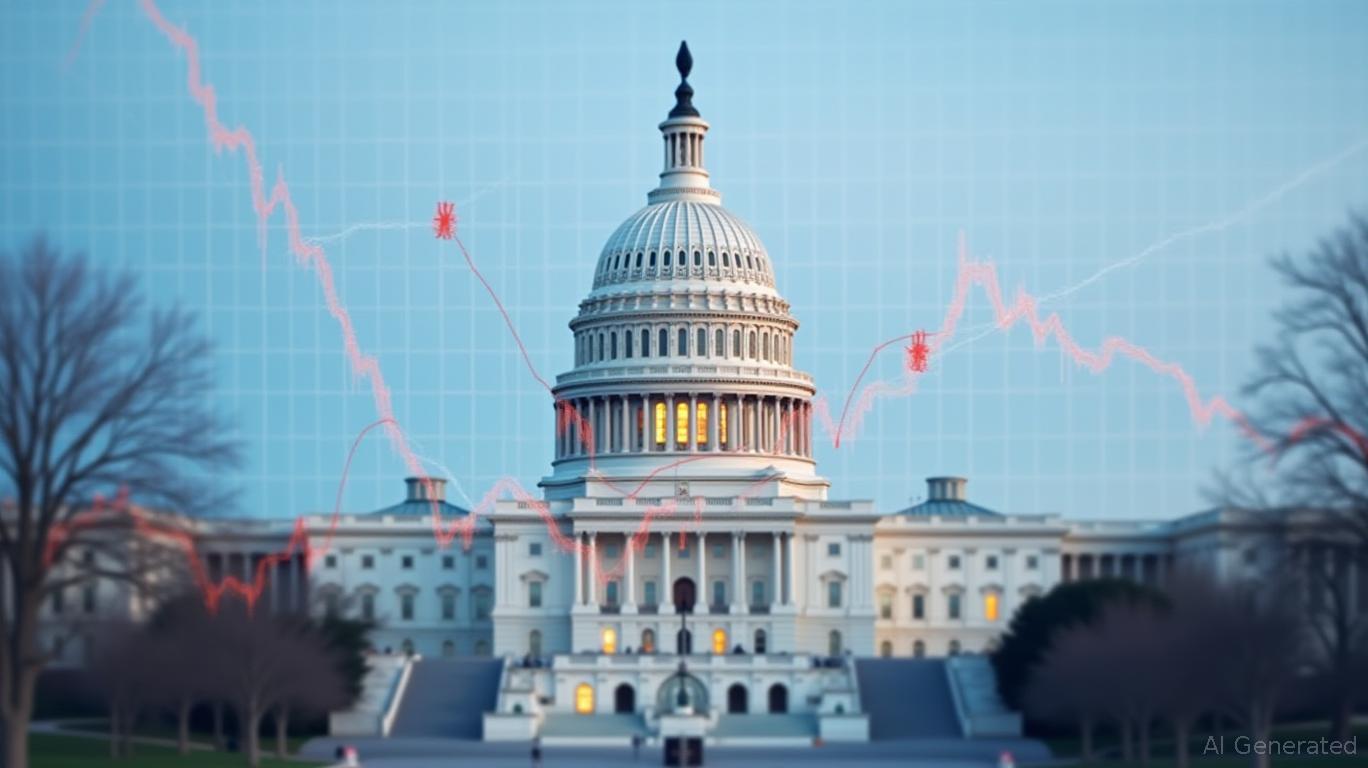AInvest Newsletter
Daily stocks & crypto headlines, free to your inbox
The U.S. Treasury's “Bessent Put” strategy, named after Treasury Secretary Scott Bessent, has become a flashpoint in debates over fiscal policy's role in manipulating interest rates. By prioritizing short-term Treasury Bills (T-bills) over long-dated debt, Bessent aims to artificially cap the 10-year Treasury yield—currently at 4.27%—to shield the economy from steepening yield curves and rising mortgage costs. Yet, as trade tensions and inflation risks loom, the strategy faces skepticism over its long-term viability. For investors, this creates a paradoxical landscape of opportunity and risk.

The strategy hinges on three pillars:
1. Short-Term Debt Surge: The Treasury has slashed long-term bond issuance while flooding markets with T-bills. By March 2025, T-bill supply stood at 88% of $7 trillion in money market fund capacity—a threshold analysts warn could trigger rollover risks if breached.
2. Liquidity Backstops: The Federal Reserve's Standing Repo Facility (SRF) has stabilized funding markets during tariff-driven volatility, enabling banks to roll over short-term debt.
3. Message Discipline: Public reaffirmations, such as the February 2025 refunding statement, have anchored expectations of capped yields.
The result? A 50-basis-point drop in the 10-year yield since early . But this comes at a cost.
Critics argue the Bessent Put is a “kamikaze fiscal policy.” Key risks include:
- Supply Constraints: If T-bill issuance exceeds money market capacity, yields on short-term debt could spike, forcing the Treasury to revert to long-term bond sales and steepen the curve.
- Inflation Triggers: Bessent's “Mar-a-Lago Accord” tariffs on China risk fueling core inflation above 3%, pressuring the Fed to hike rates despite Treasury's yield-suppression efforts.
- Banking Risks: Proposed Supplementary Leverage Ratio (SLR) reforms, which exempt Treasurys from capital calculations, could incentivize banks to overexpose themselves to short-term T-bills—a recipe for instability if rates rise abruptly.
The Treasury's fiscal austerity—aimed at stabilizing debt at 100% of GDP via Bessent's “3/3/3” plan—could indeed suppress yields by reducing bond supply. However, trade policies like tariffs on $300 billion of Chinese goods risk pushing inflation higher. This creates a zero-sum game for the Fed: cut rates to support Bessent's yield cap, or hike them to tame inflation?
Investors must position themselves to profit from—and hedge against—the Bessent Put's uncertainties:
Banks like JPMorgan Chase (JPM) and Bank of America (BAC) stand to benefit from SLR reforms, which free up capital for lending and Treasury purchases. Their stocks have already risen 8% year-to-date, but further gains hinge on the Fed's stance. Historical backtests reveal that buying these stocks on Fed rate decision dates and holding for 30 days since 2020 would have generated a total return of 29.78%, with an average annual return of 7.95%. Despite a maximum drawdown of -3.56%, the strategy's low volatility (8.20%) and Sharpe ratio of 0.73 suggest moderate risk-adjusted rewards. This underscores their resilience during policy shifts, though investors must tolerate short-term swings.
A flatter yield curve supports real estate investment trusts (REITs) and mortgage-backed securities. The iShares U.S. Real Estate ETF (IYR) has gained 12% in 2025, and further upside exists if the Fed holds rates steady.
If the Fed relents to political pressure and cuts rates, a weaker dollar could boost emerging market currencies and equities. The iShares
Emerging Markets ETF (EEM) is up 5% this year but remains vulnerable to trade-war escalation.Investors should pair long-duration bonds with inflation-protected securities (e.g., TIP ETF) and energy stocks like Exxon Mobil (XOM) to guard against tariff-driven inflation spikes.
The Bessent Put has flattened the yield curve thus far, but its longevity depends on navigating a minefield of fiscal, monetary, and geopolitical risks. Investors should favor rate-sensitive assets while hedging inflation exposure. The next stress test? Watch the T-bill-to-money-market ratio and the spread between T-bills and overnight indexed swaps (OIS). If either breaches critical thresholds, the Bessent Put's façade of stability could unravel—and with it, the assumptions underpinning today's bull markets.
Stay nimble, and keep one eye on the Fed's next move.
Daily stocks & crypto headlines, free to your inbox
Comments
No comments yet